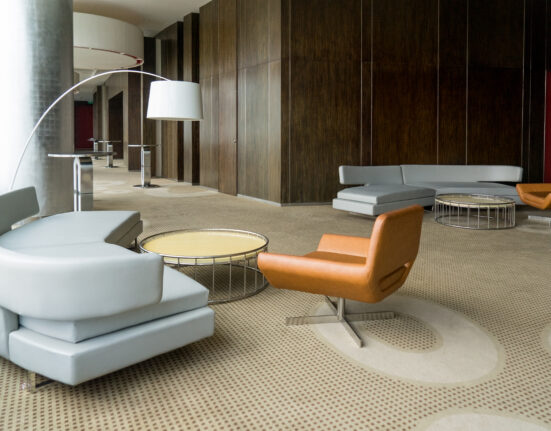Understanding Feng Shui
Furniture Feng Shui, Before delving into Furniture Feng Shui, it’s important to grasp the fundamental principles of Feng Shui itself. At its core, Feng Shui is about harnessing the energy, or “Qi,” in our environment to promote well-being, prosperity, and balance. Here are some key concepts:
The Five Elements:
Feng Shui incorporates five fundamental elements—Wood, Fire, Earth, Metal, and Water. Each element has specific attributes and colors associated with it. Balancing these elements in your space is essential for harmony.
Bagua Map:
The Bagua Map is a key tool in Feng Shui that divides a space into nine areas, each corresponding to different aspects of life, such as wealth, health, and relationships. Furniture placement and décor are often arranged based on this map to optimize energy flow.
Yin and Yang:
The balance between Yin (passive, receptive) and Yang (active, assertive) energies is essential. Furniture and decor choices can influence the Yin-Yang balance in your space.
Now that we have a basic understanding of Feng Shui principles, let’s explore how to apply them to furniture arrangement and selection.
Furniture Feng Shui Basics
Furniture Placement and Flow
The Command Position:
In Feng Shui, the “command position” is crucial for your desk or bed. It means placing these essential pieces of furniture so that you have a clear view of the room’s entrance while being farthest from the door. This placement is believed to enhance your sense of control and security.
Open Pathways:
Ensure that there are clear and unobstructed pathways throughout your living and working spaces. Furniture should not block doorways or hallways, as this can disrupt the flow of energy.
Balance and Symmetry:
Strive for a sense of balance in your furniture arrangement. If you have a large sofa on one side of the room, balance it with a substantial piece of furniture or decoration on the other side to create equilibrium.
Furniture Materials and Colors
Elemental Balance:
Choose furniture materials and colors that align with the five elements. For instance, wooden furniture represents the Wood element, while metal furniture represents the Metal element. Balancing these elements throughout your space can create harmony.
Color Harmony:
Feng Shui places a strong emphasis on color choices. For example, red is associated with the Fire element and can be used to promote passion and energy, while blue represents Water and can enhance tranquility and calmness. Choose colors that resonate with your intended purpose for the space.
Furniture Shapes and Size
Round Tables:
Circular or oval-shaped dining and coffee tables are favored in Feng Shui because they promote inclusiveness and unity. Sharp edges and corners are to be avoided as they can create negative energy, or “Sha Chi.”
Proportions:
The furniture should be appropriately sized for the room. Oversized furniture in a small space can make it feel cramped, while small furniture in a large room can lead to a sense of emptiness. Find the right balance to maximize the flow of Qi.
Declutter and Organize
Clutter Clearing:
Decluttering is a fundamental aspect of Feng Shui. Remove unnecessary items from your living and working spaces to allow the energy to flow freely. Clutter can create stagnant, negative energy.
Storage Solutions:
Proper storage and organization are essential. Use furniture pieces like cabinets, bookshelves, and storage ottomans to keep your belongings neat and organized. Closed storage is preferred over open shelves, as it conceals clutter.
Furniture Feng Shui in Different Spaces
Living Room
Seating Arrangement:
Arrange seating so that it encourages conversation and connection. Sofas and chairs should face each other, forming a welcoming and harmonious gathering space.
Centerpiece:
Incorporate a central piece, such as a coffee table or a piece of art, to anchor the room and promote unity.
Balance:
Maintain a sense of balance in the room with symmetrical furniture placement and a mix of elemental colors and materials.
Bedroom
Bed Placement:
Position the bed in the command position, with a clear view of the bedroom door. Avoid placing the bed under heavy beams or sloped ceilings.
Balance:
Use balanced bedside tables and lamps on each side of the bed to promote equality in the relationship. Avoid placing the bed against a wall on one side, as this can symbolize an imbalance of power.
Declutter:
Keep the bedroom clutter-free, with ample storage for clothing and personal items.
Home Office
Desk Position:
Place the desk in the command position, facing the entrance or the main door. This promotes focus and a sense of control over your work.
Ergonomics:
Invest in comfortable and ergonomic office furniture, such as an adjustable chair and an organized workspace.
Inspiration:
Add elements that inspire creativity and productivity, such as artwork, plants, and soothing colors.
Dining Room
Round Tables:
Opt for a round or oval dining table to create a harmonious and inclusive atmosphere during meals.
Conclusion
Furniture Feng Shui is a holistic approach to interior design that seeks to enhance the energy and flow of Qi in our living and working spaces. By carefully considering furniture placement, materials, colors, and shapes, you can create harmonious environments that support your well-being and goals.
While the principles of Feng Shui offer valuable guidance, it’s essential to remember that individual preferences and needs should also play a significant role in your furniture choices. Striking a balance between Feng Shui principles and your personal style can result in a space that not only feels harmonious but also reflects your unique personality and values. So, whether you’re arranging your living room, bedroom, or home office, consider the principles of Furniture Feng Shui to create spaces that nurture positivity and balance in your life.















Leave feedback about this